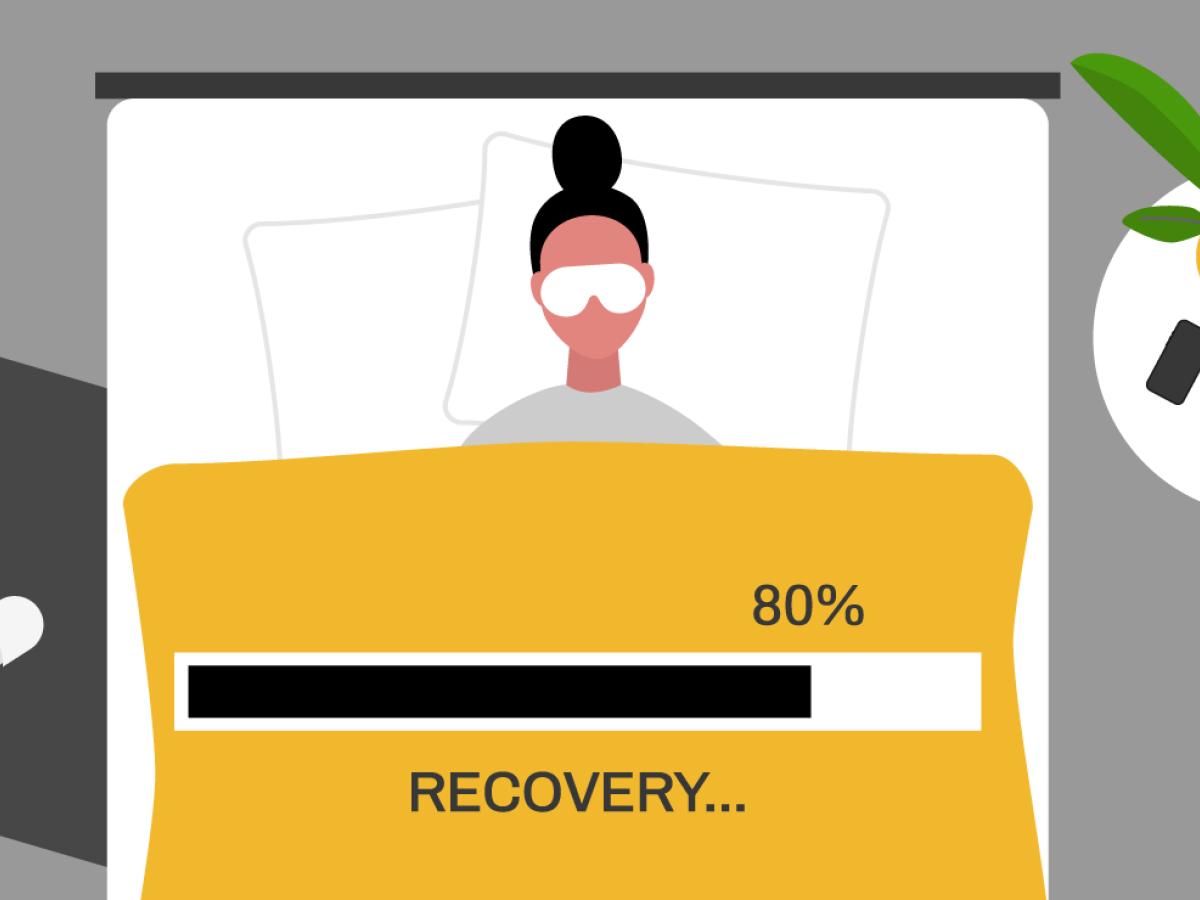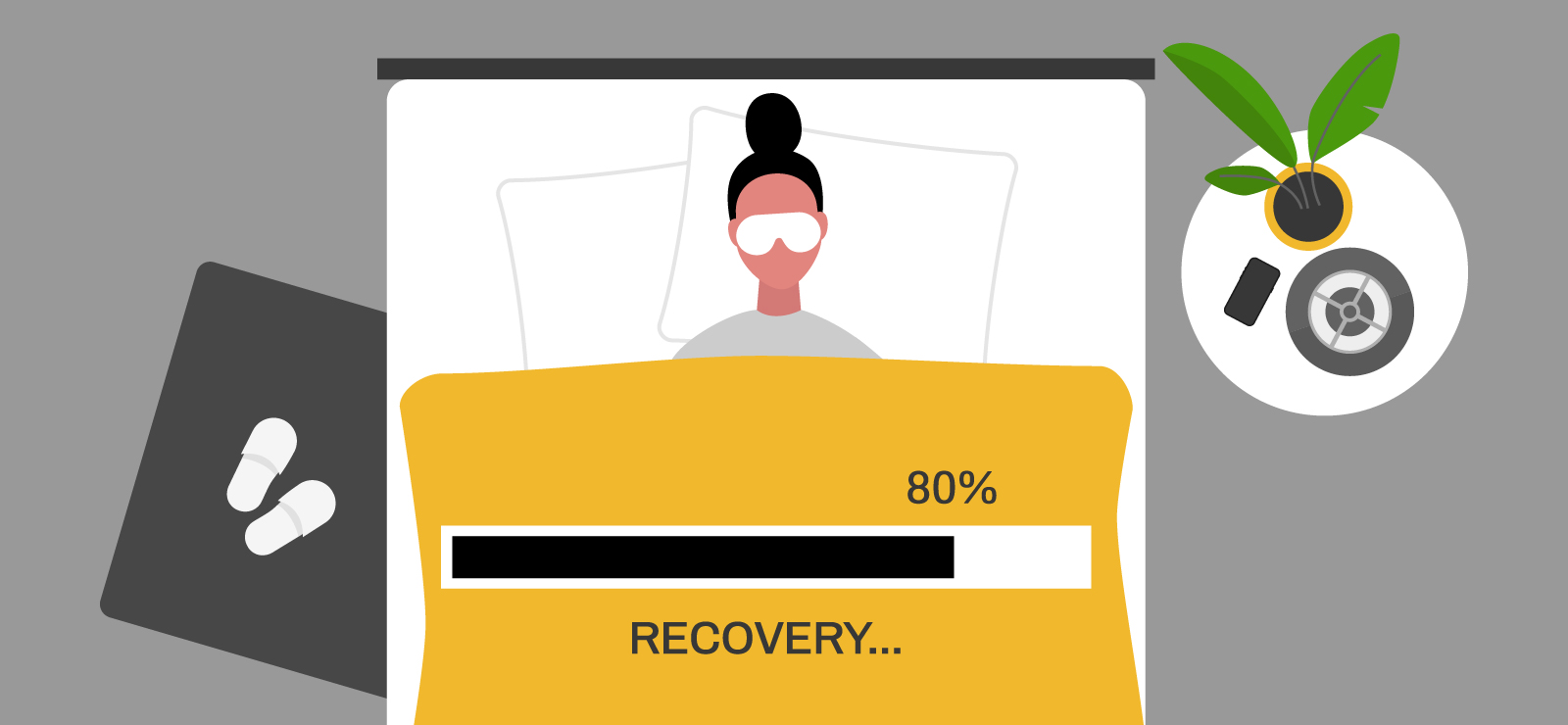December 27, 2022

There’s a lot of advice available about how to get more sleep. But if you’re living with seasonal affective disorder (SAD), you may be getting too much sleep — a habit that can actually still leave you feeling tired.
It’s understandable to crave extra shut-eye when the sun sets early, the temperature drops and you feel a little blue. But there are ways to get your hankering for hibernation under control, says Dr. Margaret Mike, an MU Health Care neurologist specializing in sleep medicine. And sleep management is critical for controlling the symptoms of SAD.
What Is SAD?
SAD is a type of depression that begins and ends around the same time every year — typically surfacing in late fall or winter. It affects more than 10 million Americans and is diagnosed more frequently in women, young people and people living farther from the equator.
The symptoms of SAD are connected to how much or how little daylight you see in a day — as your daily exposure to sunlight decreases, the symptoms of depression increase. SAD usually resolves within a few months once the season changes and daylight hours increase.
Similar to typical symptoms of depression, people with SAD may experience:
- Difficulty concentrating
- Feeling hopeless or worthless
- Low energy
- Overeating, with a craving for carbohydrates
- Oversleeping
- Social withdrawal
- Weight gain
How SAD Affects Sleep
Experts don’t fully understand what causes SAD. Still, most believe it’s related to your levels of serotonin (a brain chemical that regulates mood) or melatonin (the hormone that helps maintain the normal sleep-wake cycle). Sunlight affects those levels.
“When seasonal changes occur, the lack of sunlight can impact your body’s internal rhythms and, in turn, your mood, behavior and sleep,” Dr. Mike says.
People with SAD often report hypersomnia — sleeping longer at night or feeling very sleepy during the day, even after adequate sleep. They tend to sleep up to two hours or more per night in the winter compared to the summer. But extra sleep is not always a good thing, especially if the sleep you’re getting is not quality sleep.
Sleep Hygiene for People With SAD
You can change how well you sleep by incorporating sleep hygiene — habits that help you sleep well regularly. Most sleep hygiene recommendations focus on helping you fall asleep:
- Keep your room cool and dark
- Shut down electronics an hour before bedtime
People with SAD need sleep hygiene that encourages quality sleep while also controlling how much they sleep. Getting the right amount of sleep — and not oversleeping — can help with SAD symptoms.
If you have SAD, take these steps for a good night’s sleep:
1. Set a sleep schedule
Deciding when your sleep time starts and ends will go a long way in establishing your internal clock. But you need to stick with it every day, including weekends.
“If you stay up two or three hours later on weekends and sleep in on weekend mornings, you’ll struggle to fall asleep early enough on Sunday night,” Dr. Mike says. “It has a jetlag effect. You might as well fly from New York to Los Angeles and back every weekend.”
She recommends staying within one hour in either direction of your scheduled sleep and wake times.
2. Get morning light
Anyone who’s experienced a sunny day after a few cloudy days knows that sunlight is energizing. But winter offers limited sunlight.
“Sunlight regulates our internal body clock,” Dr. Mike says. “And our sensitivity to sunlight is strongest in the morning, so it’s critical to expose yourself to light soon after waking.” To increase your exposure to morning light, open your curtains before bed, walk the dog each morning or sit by a sunlit window.
Dr. Mike also recommends considering bright light therapy as part of your daily routine. Most people can do this with a light box at home, but it’s important to talk to a health care provider to ensure you purchase one with the right intensity and that no other health conditions may be impacted. For instance, light boxes that are too bright may cause eye strain for those with eye conditions (such as macular degeneration) or trigger hypomania, or over-excitement, in those with mood disorders (such as bi-polar disorder).
Once you have the go-ahead from your provider, the next step is checking your light box’s manufacturer details regarding the strength of light (LUX) and recommended distance for usage. Most therapy studies use boxes with 10,000 LUX at a distance of 18 inches away. Set yours up according to the guidelines and use it while you put on makeup, watch the morning news or eat breakfast. Glance at it occasionally and aim for 30 to 60 minutes of exposure.
When done correctly, research shows that daily light therapy for a month can reduce the symptoms of depression by as much as 83%.
3. Avoid long naps
Napping is a strong temptation when you have seasonal depression. But fight the urge to do it. Sleeping during the day adds to your total sleep time. It can also affect your ability to fall asleep later — wreaking havoc on your sleep schedule.
If you didn’t get a great night’s sleep and need to close your eyes during the day, limit your nap to around 20 minutes, at least six hours before bedtime. “Consider having your final coffee or tea early to mid-afternoon and then take a 20-minute power nap,” Dr. Mike says. “While you nap, your body will absorb the caffeine, and the effects should kick in as you wake.”
4. Skip alcohol, caffeine and sugar late in the day
To ensure you get quality sleep, avoid having alcohol, caffeine or sugar late in the day. It doesn’t matter if you think the alcohol will help you sleep or the caffeine will help you avoid a nap. Having those substances in your system will disrupt your sleep.
“Caffeine can affect us for a long time,” Dr. Mike says. “I recommend stopping caffeine by 3 pm. Even though it may not keep you from falling asleep, it affects sleep quality.”
Keep an eye out for sneaky sugars as well. You might turn to hot chocolate or sweets instead of tea or coffee, but the sugar will have a similar effect.
Getting Help for SAD
Sometimes sleep hygiene and self-care are not enough to treat SAD. Other treatments for SAD include cognitive behavioral therapy and antidepressant medication.
“When SAD is interfering with your normal functioning, that’s when it’s time to talk to your health care provider to see what treatment options might be best for you,” Dr. Mike says.
Next Steps and Useful Resources
- Need additional help with your sleep? Learn more about treatment for sleep disorders.
- Want to talk to a primary care doctor about being treated for seasonal depression? Find one today.


